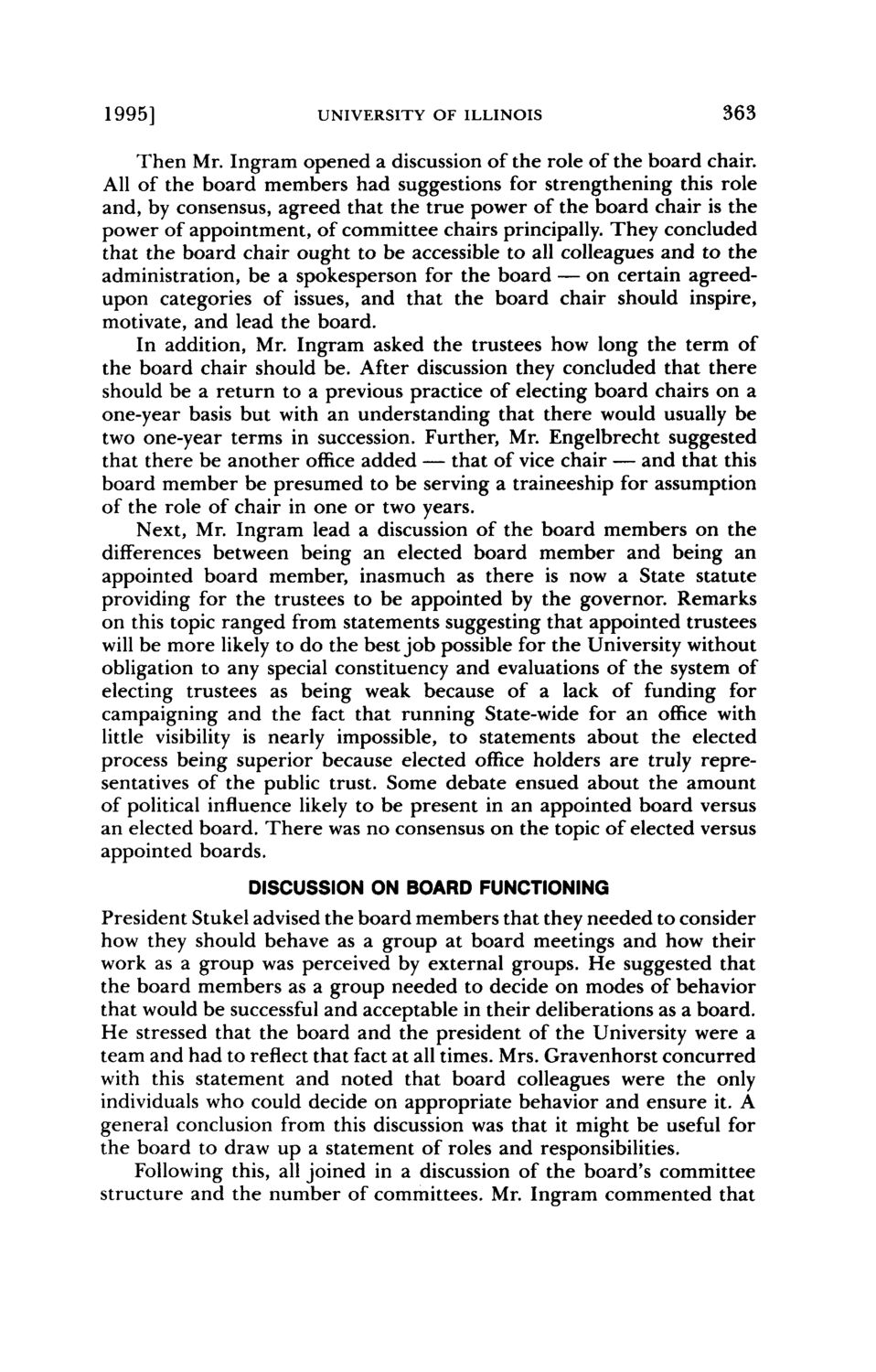| |
| |
Caption: Board of Trustees Minutes - 1994
This is a reduced-resolution page image for fast online browsing.

EXTRACTED TEXT FROM PAGE:
1995] UNIVERSITY OF ILLINOIS 363 Then Mr. Ingram opened a discussion of the role of the board chair. All of the board members had suggestions for strengthening this role and, by consensus, agreed that the true power of the board chair is the power of appointment, of committee chairs principally. They concluded that the board chair ought to be accessible to all colleagues and to the administration, be a spokesperson for the board — on certain agreedupon categories of issues, and that the board chair should inspire, motivate, and lead the board. In addition, Mr. Ingram asked the trustees how long the term of the board chair should be. After discussion they concluded that there should be a return to a previous practice of electing board chairs on a one-year basis but with an understanding that there would usually be two one-year terms in succession. Further, Mr. Engelbrecht suggested that there be another office added — that of vice chair — and that this board member be presumed to be serving a traineeship for assumption of the role of chair in one or two years. Next, Mr. Ingram lead a discussion of the board members on the differences between being an elected board member and being an appointed board member, inasmuch as there is now a State statute providing for the trustees to be appointed by the governor. Remarks on this topic ranged from statements suggesting that appointed trustees will be more likely to do the best job possible for the University without obligation to any special constituency and evaluations of the system of electing trustees as being weak because of a lack of funding for campaigning and the fact that running State-wide for an office with little visibility is nearly impossible, to statements about the elected process being superior because elected office holders are truly representatives of the public trust. Some debate ensued about the amount of political influence likely to be present in an appointed board versus an elected board. There was no consensus on the topic of elected versus appointed boards. DISCUSSION ON BOARD FUNCTIONING President Stukel advised the board members that they needed to consider how they should behave as a group at board meetings and how their work as a group was perceived by external groups. He suggested that the board members as a group needed to decide on modes of behavior that would be successful and acceptable in their deliberations as a board. He stressed that the board and the president of the University were a team and had to reflect that fact at all times. Mrs. Gravenhorst concurred with this statement and noted that board colleagues were the only individuals who could decide on appropriate behavior and ensure it. A general conclusion from this discussion was that it might be useful for the board to draw up a statement of roles and responsibilities. Following this, all joined in a discussion of the board's committee structure and the number of committees. Mr. Ingram commented that
| |